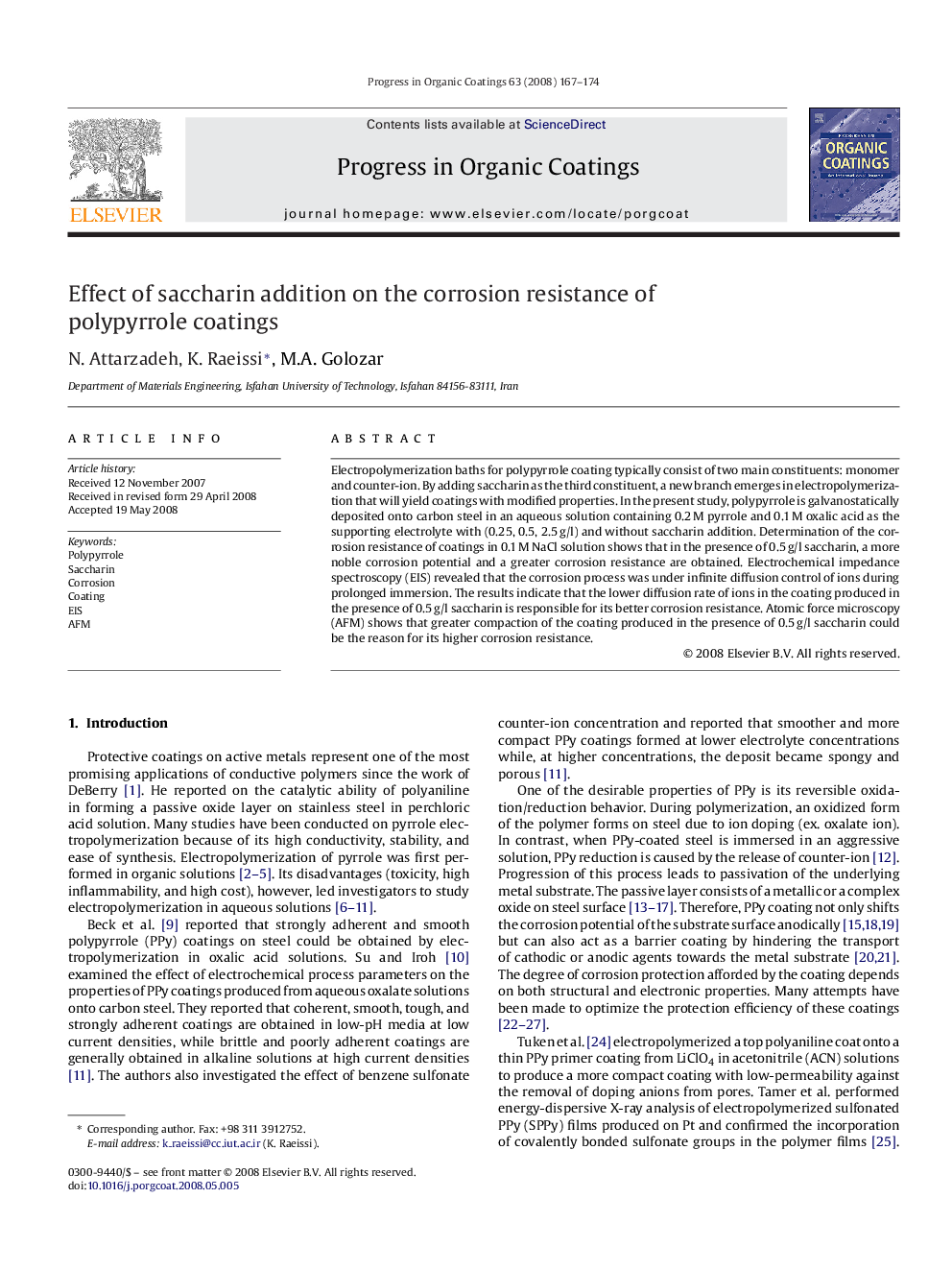| Article ID | Journal | Published Year | Pages | File Type |
|---|---|---|---|---|
| 693991 | Progress in Organic Coatings | 2008 | 8 Pages |
Electropolymerization baths for polypyrrole coating typically consist of two main constituents: monomer and counter-ion. By adding saccharin as the third constituent, a new branch emerges in electropolymerization that will yield coatings with modified properties. In the present study, polypyrrole is galvanostatically deposited onto carbon steel in an aqueous solution containing 0.2 M pyrrole and 0.1 M oxalic acid as the supporting electrolyte with (0.25, 0.5, 2.5 g/l) and without saccharin addition. Determination of the corrosion resistance of coatings in 0.1 M NaCl solution shows that in the presence of 0.5 g/l saccharin, a more noble corrosion potential and a greater corrosion resistance are obtained. Electrochemical impedance spectroscopy (EIS) revealed that the corrosion process was under infinite diffusion control of ions during prolonged immersion. The results indicate that the lower diffusion rate of ions in the coating produced in the presence of 0.5 g/l saccharin is responsible for its better corrosion resistance. Atomic force microscopy (AFM) shows that greater compaction of the coating produced in the presence of 0.5 g/l saccharin could be the reason for its higher corrosion resistance.
